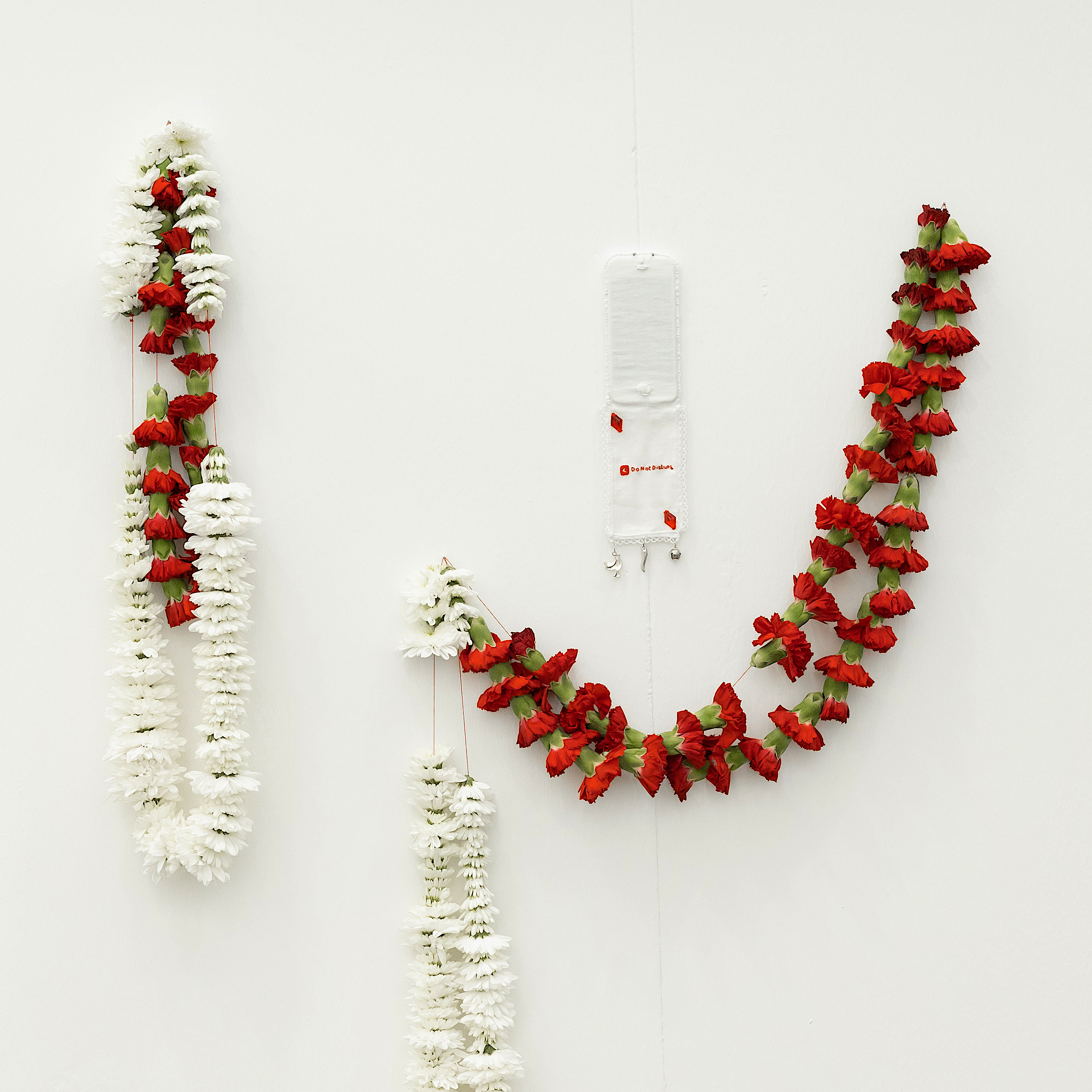︎︎︎︎ “DEATH-DESIGN-DATA” available NOW at ONOMATOPEE online book shop. ︎︎︎
“Dreams - of dreams of dreams” is available via Onomatopee online book shop. ︎︎︎︎︎︎︎︎︎︎︎︎︎︎︎︎︎
“Dreams - of dreams of dreams” is available via Onomatopee online book shop. ︎︎︎︎︎︎︎︎︎︎︎︎︎︎︎︎︎
INDEX
1 CURATING
2 DESIGN RESEARCH
3 WORKSHOPS
4 WRITINGS
HistoricALL! A collective rewriting of design history
Onomatopee, Eindhoven, January - July 2023, research project
“This exhibition shows collective and individual works by 27 participants made during a series of workshops together with curators, design practitioners, and researchers who facilitated alternative ways of speaking and thinking about design history.
Through ongoing discussions and conversations, attempts are made to find answers to the following questions: How do we tell the history of design? And who is it told by? Which stories have been neglected and how can they be uncovered and re-performed? What are the tools we have learned and is it possible to unlearn them? What can we learn from each other? Where do we go from here?
HistoricALL claims that design history should be open to ALL and made by ALL. This implies a more inclusive, less institutional structure in the modalities in which design history is discussed and eventually made public.
The workshop as a methodology was addressed as a space for collective learning and horizontal exchange, as an experiment of sym-poiesis, i.e., of making-together with. The intention of this serie of workshops was to enable other perspectives to be heard and possible future scenarios to be shaped. Therefore, their own attempt was propositional rather than claiming to establish a new canon in the history of design. A proposition that embodies multiplicity as an act of resistance and care against rigid systems of oppression, like capitalism, colonialism, and patriarchy.
From the act of cooking to printing, from the body to the digital, from history to micro-histories: historiographies of contemporary (design) urgencies.”
The project also resulted in the riso-printed homonym zine HistoricALL! A collective rewriting of design history with an inspiring introduction by Maxime Benvenuto as well as contributions by curator Cecilia Casabona, all participants involved in the project and the workshop leaders, Alvin Arthur, Mayar El Barky, Annika Frye, Kilian Frieling, Noam Youngrak Son, Maya Ober, Margarita Osipian, and Leanne Wijnsma.
Graphic design by Martina Eddone.
More info here.
![]()
Open call, February 2023, graphic design by Martina Eddone
︎
Designers From the Flatland
Milan Design Week 2023, April 2023 at DOPO? and Ortica Studio
“Designers From the Flatland”. An exhibition about Dutch design without any Dutch designers.
Seven international designers based in The Netherlands come to Milan as representatives of the current reality of Dutch design, between working conditions and cultural contradictions.
From 18 - 24 April 2023, during Milan Design Week, the spaces of DOPO? and Ortica Studio come together to host a satellite exhibition, accompanied by a public program that spreads across the two locations.
One exhibition, two connected work spaces, seven designers. A setup that offers the opportunity for two young milanese spaces to collaborate, mix their different audiences, and to confront each other with an international scene.
Designers from the Flatland contextualizes and ties together the work of NL based design practitioners with a foreign background. Designers whose practice and object-making mirror their condition as foreigners; who have embraced the Dutch design lessons while adding their own perspectives to balance, contrast, and enrich the discipline, and by doing so, creating a space in-between Dutch design and their original cultural backgrounds; an in-between space which enables to nourish a critical distance to reflect on the discipline from within and from the outside at the same time.
This exhibition was co-curated together with Ramón Jiménez Cárdenas.
Participating designers:
Bruno Baietto (Uruguay)
Guenn Ramon Gustina (Curaçao)
Ramón Jiménez Cárdenas (Mexico)
Georgina Pantazopoulou (Greece)
Marta Ríos (Spain)
Scylla (Bianca Schick, Italy & Sofia Topi, Greece)
Studio Watershore (Yu-Ching Chiang & Ying-Ting Shen, Taiwan)
More info here.
This exhibition and public program are supported by Stimuleringsfonds Creatieve Industrie NL.
![]()
Ortica Studio, Via Enrico Nöe, 3
![]()
DOPO?, Via Carlo Boncompagni, 51/10
︎
RE-design-er
DDW 2022 for Onomatopee, Eindhoven, October 2022
After years of pondering stasis, we are now all set. Meanwhile, the design field has been transforming. New forms of thinking and making have emerged. Onomatopee is now daring designers to act.
Through three distinct shows, Onomatopee presents the work of designers who critically question and re-think the role of design and the designer.
With this critical gaze, Onomatopee turns into an active laboratory, offering makers, agents, thinkers, and performers a playground for experimentation. We are not just interested in design solutions, but rather in the possibility of creating new opportunities for action. This implies awareness of how you work and the process.
It is on those processes, that anticipate and inform the design practice, that we turn our attention. The RE-design-er offers us the ability to continuously question ourselves.
A vibrant public program invites you to experience and discuss, out loud and freely, how, why, and for whom does design happen?
RE-design-er is curated by Cecilia Casabona in collaboration with Onomatopee.
Re-design-er was exhibited again during Milan Design Week 2023 at BASE “We will design”.
![]()
from Design in Conversation, 241. La historia del Equipal by Ramón Jiménez Cárdenas.
Courtesy of the artist.
![]()
from Design in Conversation, 244. How design mediates our perception of value and why we should reconsider it by Bruno Baietto.
︎
Funeral For Digital Data
Site-specific installation and performance for ArtVerona Fair, Italy, October 2022
In the context of data politics - the ways our digital footprints are valued, extracted and monetized - how do we care for ourselves, our memories and legacy in the digital realm? We live in a data saturated yet under informed present. Especially in the aftermath of the pandemic, each of us is leaving behind large amounts of personal information stored in computers and on networked systems. As never before, our lives have moved online, not only a space for recreation and a paradise of (un)limited resources, but increasingly a space for work, for identity expression, political and personal affirmation; a space of venting violence, of misinformation and, at the same time, an opportunity for healing and acknowledging trauma. Eventually, even a system for (digital) immortality. Nonetheless, what manifests most clearly today is the complexity of our vulnerability online and the necessity to restore and heal our relationship to the internet and the digital.
In the context of ArtVerona 2022, the curatorial intervention around the topic concerning loss, grief & digital data was selected. In a realm soaked in personal digital information, that sometimes represents even the essence of what we are as a whole, we are now facing the new, scary thought that we may lose everything altogether. This possibility comes with new feelings, new systems of relationships formed between us and our digital selves which are not fully acknowledged, nor ritualised. As well as in the physical world, the occurrence of digital death - of users or their data - has implications beyond the individual’s lifespan and personal control (for example, systems for managing files beyond one’s death do not really exist yet).
A collective exhibition project that circles around rocks: the way we understand rocks, perceive rocks and interpret rocks conducted under the tutoring of Agata Jaworska.
Can we create a new understanding of the relationship between human and nonhuman? “The Human emerges as an abstraction on the one side with the Nonhuman world on the other. When did humans become the dominant force in the world? […] From a geological point of view, the planet began without Life, with Nonlife, out of which, somehow, came sorts of Life” (Geontologies: A Requiem to Late Liberalism, Elisabeth A. Povinelli). How to unfold the antagonism between Human’s perspective and their effect of the world?
Co-designed with Guy Bar-Sinai, Hannah Hertrich and Laura Papke.
Have a look to this video for more info.
![]()
0. Surveillance KIT
![]()
![]()
![]()
1. Body Heat Thermometer 2. Electric Distancing Fence 3. Accent detector
Engagement:
“How to engage the public space?”
<< Dear Engagement,
You asked me a big question, to which I did not know the answer, and I still do not know. However, I dared myself to find it and to do so, I started an artistic research through the streets of Eindhoven.Firstly, I tried to understand what engagement is all about and how to produce it. To engage is “to enter in conversation with,” it is an active process that involves two or more parts.
How then, could I dare someone to engage with me within the public space? I first needed to be noticed, and then start to share something with my audience. The chosen location for my first attempt was a hidden alley, indifferent but powerful: the shame. I recognised shame as the tool through which to overcome the dichotomy between public and private space. To feel ashamed at home is unusual, so why then should we be ashamed outside? [...to be continued...] >>
![]()
0. Cecilia Casabona, Eindhoven; ph. Valeria Fabiano
![]()
1. Info poster, size A2
![]()
0. Project in action, one-time performance; ph. Cecilia Casabona
![]()
![]()
1,2. Project in action; ph. Cecilia Casabona
Listening Otherwise
The Netherlands, 2021
A performative writing workshop through which notions of productivity and value in the neoliberal west are questioned. Who or what is productive? Who can be said to produce value? And how to be productive otherwise? Through a series of performative exercises in which body, voice and rhythm become tools for research and experimentation, this workshop aims to set up a space for doing otherwise. A doing otherwise, together, that is not based on profit, accumulation or economic growth. The research finds its inspiration in music and the notion of polyphony which is conceived as a methodology for doing and being together, in contrast to the western idea of individualism (as idea of autonomy).
As a trained musician, polyphony came naturally to me by sharing my musical experience with others. I developed a practice that has parallels to music and language. By playing around the notions of performativity and performative utterances, expressing words becomes an act of doing-making. Informed by the reality-producing capacity of language (through defining what is meaningful within a field of possibilities, what it means to matter) this workshop enables polyphonic realities to emerge (Reworlding). A practice of doing otherwise is proposed, comprehending the design tools of writing and reading out loud inspired by music. The writing process has a propositional dimension of doing: how actions can be taken with words; the jointly reading out loud activates what I named “the intimate strike”: how actions can organize and give significance.
This project is a result of a thesis research “Reading out loud” written by Cecilia Casabona (The Critical Inquiry Lab, MA Eindhoven Design Academy).
![]()
0. Listening Otherwise, “the intimate strike”; ph. Femke Reijerman
How to escape the policies of control and re-gain the autonomy of the art? The discussion around autonomy is contextualized within the contrast of quantitative democracy, where people is called every few years to vote anonymously, and qualitative democracy, where the commons - continuously and contingently re-shaped - opens up a democratic space for the singular and constantly recreate a space for singular but synchronized voices to pop up. In the same way artists are called to re-appropriate of their autonomy by dismantling relations of dependency and claim the authority of re-building their “own” commons - again and again and again and.
This project has been held online due to Coronavirus emergency.
Go to Listening Exercises here.
![]()
![]()
0,1. Listening exercises, video screenshots.
Reading out loud. Polyphonic systems for a collaborative survival
The Netherlands, 2021
<< Precarity produces vulnerability through which life chaotically reproduces, while surviving means to ensemble various vulnerabilities in polyphony. Life itself is precarious: living is always collective, emergent and relational and therefore indeterminate. So, it is through indeterminacy and mutual vulnerability that we collectively survive — in polyphony.
The aim of this research is to encourage new forms of collaborative survival through the development of a practice of caring. Reading out loud is conceived as a tool for investigation and deconstruction of personal and common struggles. >> pp. 9-10
![]()
![]()
![]()
![]()
1,2,3. Master thesis publication. Written by Cecilia Casabona. Concept and book design by the author.
To read the full thesis go here.
1 CURATING
2 DESIGN RESEARCH
3 WORKSHOPS
4 WRITINGS
1 CURATING
HistoricALL! A collective rewriting of design history
Onomatopee, Eindhoven, January - July 2023, research project
Through ongoing discussions and conversations, attempts are made to find answers to the following questions: How do we tell the history of design? And who is it told by? Which stories have been neglected and how can they be uncovered and re-performed? What are the tools we have learned and is it possible to unlearn them? What can we learn from each other? Where do we go from here?
HistoricALL claims that design history should be open to ALL and made by ALL. This implies a more inclusive, less institutional structure in the modalities in which design history is discussed and eventually made public.
The workshop as a methodology was addressed as a space for collective learning and horizontal exchange, as an experiment of sym-poiesis, i.e., of making-together with. The intention of this serie of workshops was to enable other perspectives to be heard and possible future scenarios to be shaped. Therefore, their own attempt was propositional rather than claiming to establish a new canon in the history of design. A proposition that embodies multiplicity as an act of resistance and care against rigid systems of oppression, like capitalism, colonialism, and patriarchy.
From the act of cooking to printing, from the body to the digital, from history to micro-histories: historiographies of contemporary (design) urgencies.”
The project also resulted in the riso-printed homonym zine HistoricALL! A collective rewriting of design history with an inspiring introduction by Maxime Benvenuto as well as contributions by curator Cecilia Casabona, all participants involved in the project and the workshop leaders, Alvin Arthur, Mayar El Barky, Annika Frye, Kilian Frieling, Noam Youngrak Son, Maya Ober, Margarita Osipian, and Leanne Wijnsma.
Graphic design by Martina Eddone.
More info here.
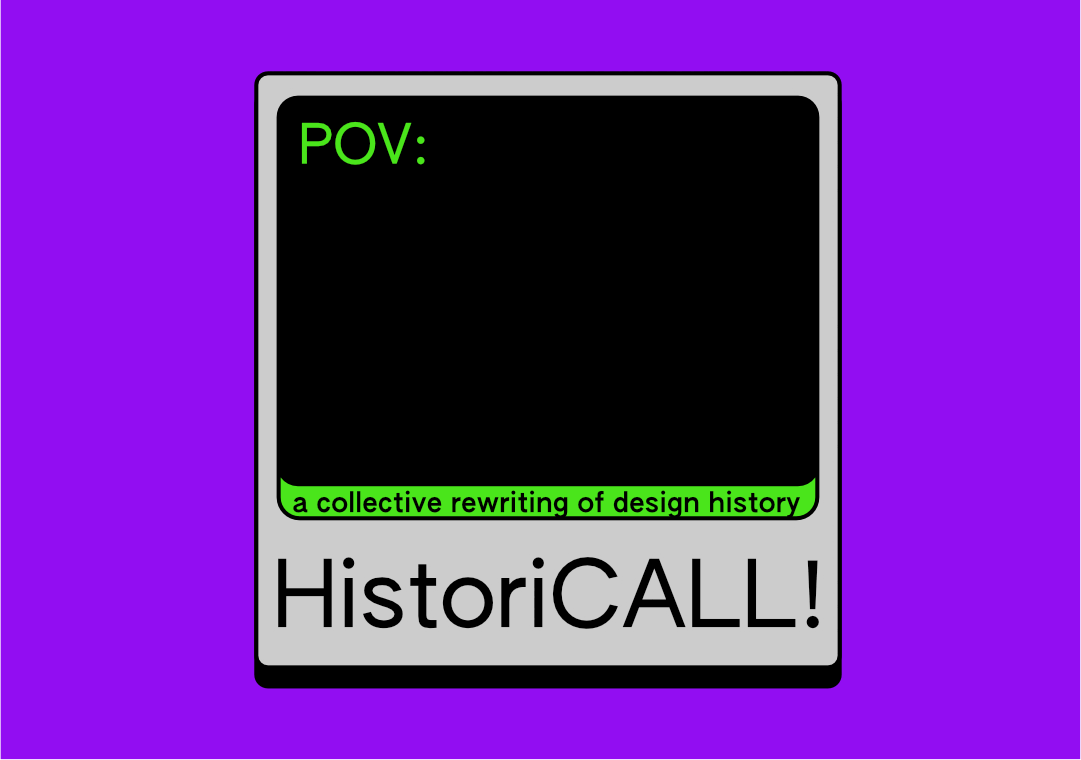
Open call, February 2023, graphic design by Martina Eddone
︎
Designers From the Flatland
Milan Design Week 2023, April 2023 at DOPO? and Ortica Studio
Seven international designers based in The Netherlands come to Milan as representatives of the current reality of Dutch design, between working conditions and cultural contradictions.
From 18 - 24 April 2023, during Milan Design Week, the spaces of DOPO? and Ortica Studio come together to host a satellite exhibition, accompanied by a public program that spreads across the two locations.
One exhibition, two connected work spaces, seven designers. A setup that offers the opportunity for two young milanese spaces to collaborate, mix their different audiences, and to confront each other with an international scene.
Designers from the Flatland contextualizes and ties together the work of NL based design practitioners with a foreign background. Designers whose practice and object-making mirror their condition as foreigners; who have embraced the Dutch design lessons while adding their own perspectives to balance, contrast, and enrich the discipline, and by doing so, creating a space in-between Dutch design and their original cultural backgrounds; an in-between space which enables to nourish a critical distance to reflect on the discipline from within and from the outside at the same time.
This exhibition was co-curated together with Ramón Jiménez Cárdenas.
Participating designers:
Bruno Baietto (Uruguay)
Guenn Ramon Gustina (Curaçao)
Ramón Jiménez Cárdenas (Mexico)
Georgina Pantazopoulou (Greece)
Marta Ríos (Spain)
Scylla (Bianca Schick, Italy & Sofia Topi, Greece)
Studio Watershore (Yu-Ching Chiang & Ying-Ting Shen, Taiwan)
More info here.
This exhibition and public program are supported by Stimuleringsfonds Creatieve Industrie NL.

Ortica Studio, Via Enrico Nöe, 3

DOPO?, Via Carlo Boncompagni, 51/10
︎
RE-design-er
DDW 2022 for Onomatopee, Eindhoven, October 2022
Through three distinct shows, Onomatopee presents the work of designers who critically question and re-think the role of design and the designer.
With this critical gaze, Onomatopee turns into an active laboratory, offering makers, agents, thinkers, and performers a playground for experimentation. We are not just interested in design solutions, but rather in the possibility of creating new opportunities for action. This implies awareness of how you work and the process.
It is on those processes, that anticipate and inform the design practice, that we turn our attention. The RE-design-er offers us the ability to continuously question ourselves.
A vibrant public program invites you to experience and discuss, out loud and freely, how, why, and for whom does design happen?
RE-design-er is curated by Cecilia Casabona in collaboration with Onomatopee.
Re-design-er was exhibited again during Milan Design Week 2023 at BASE “We will design”.
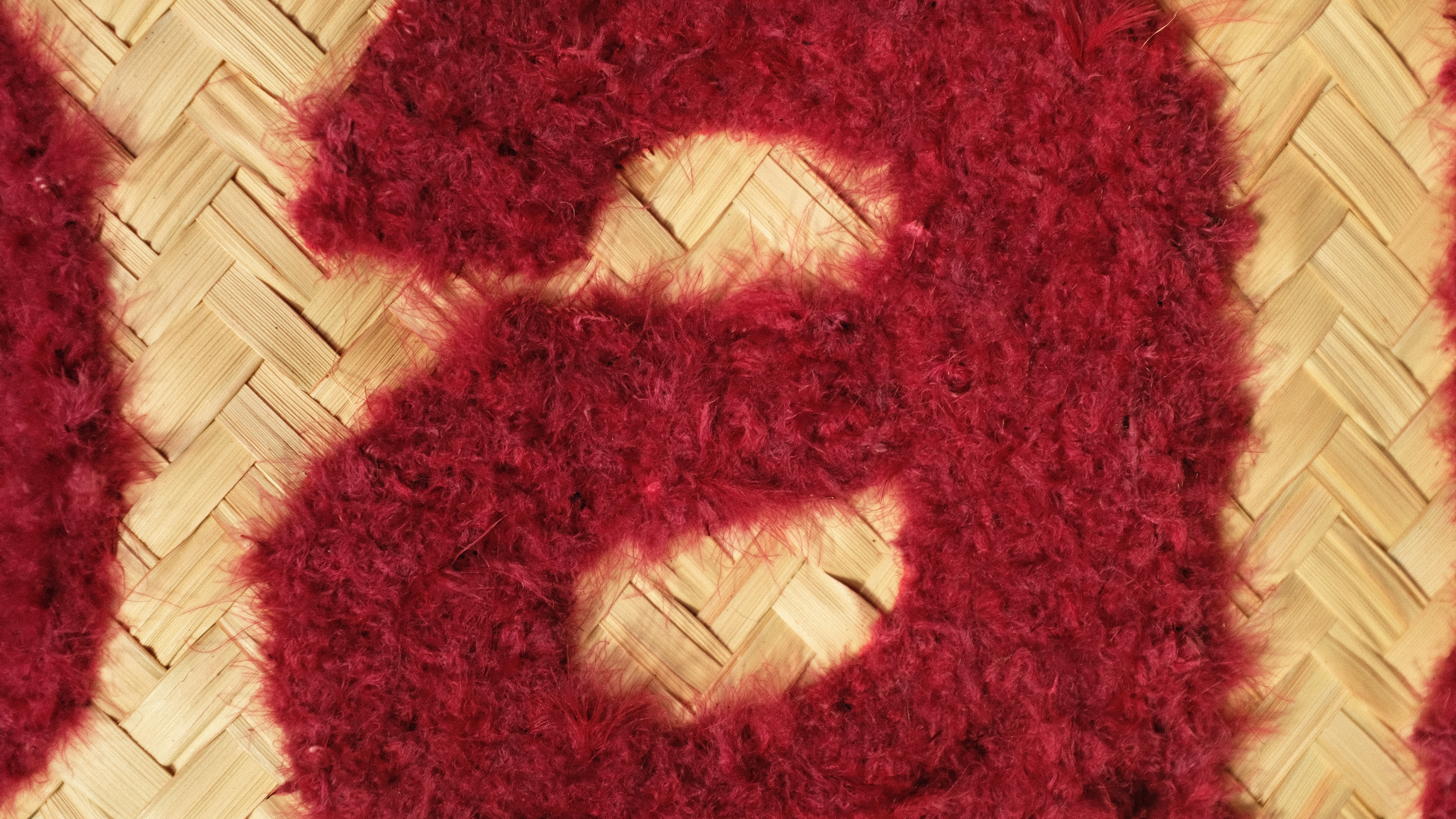
from Design in Conversation, 241. La historia del Equipal by Ramón Jiménez Cárdenas.
Courtesy of the artist.
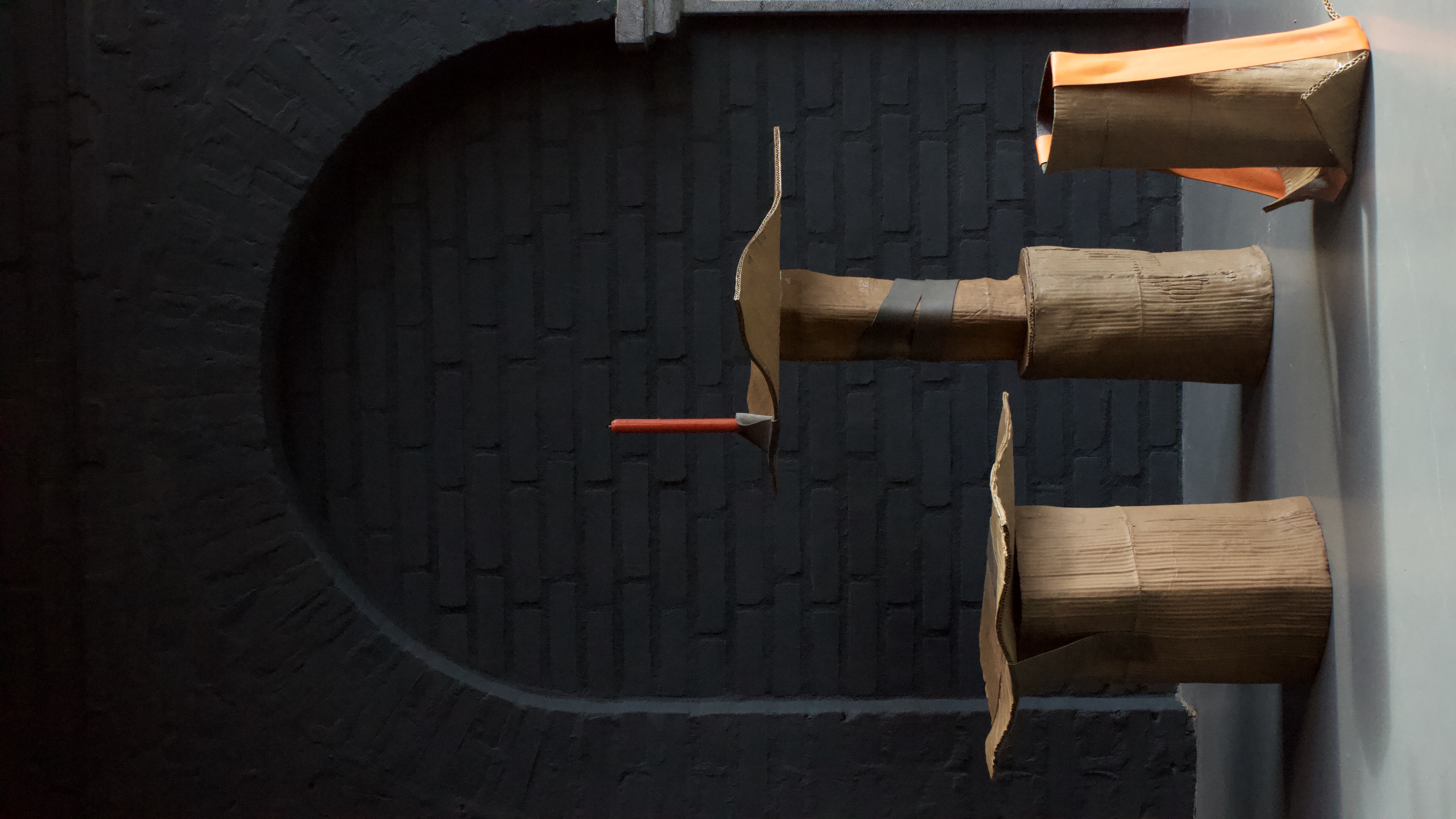
from Design in Conversation, 244. How design mediates our perception of value and why we should reconsider it by Bruno Baietto.
︎
Funeral For Digital Data
Site-specific installation and performance for ArtVerona Fair, Italy, October 2022
In the context of ArtVerona 2022, the curatorial intervention around the topic concerning loss, grief & digital data was selected. In a realm soaked in personal digital information, that sometimes represents even the essence of what we are as a whole, we are now facing the new, scary thought that we may lose everything altogether. This possibility comes with new feelings, new systems of relationships formed between us and our digital selves which are not fully acknowledged, nor ritualised. As well as in the physical world, the occurrence of digital death - of users or their data - has implications beyond the individual’s lifespan and personal control (for example, systems for managing files beyond one’s death do not really exist yet).
A collective exhibition project that circles around rocks: the way we understand rocks, perceive rocks and interpret rocks conducted under the tutoring of Agata Jaworska.
Can we create a new understanding of the relationship between human and nonhuman? “The Human emerges as an abstraction on the one side with the Nonhuman world on the other. When did humans become the dominant force in the world? […] From a geological point of view, the planet began without Life, with Nonlife, out of which, somehow, came sorts of Life” (Geontologies: A Requiem to Late Liberalism, Elisabeth A. Povinelli). How to unfold the antagonism between Human’s perspective and their effect of the world?
Co-curated with Silvia Angelucci, Paula Chang and Juliette Mirabito, featuring The Critical Inquiry Lab.
Due to Coronavirus emergency, the exhibition has been published online.
![]()
︎
The journey of trust in cocoa cosmos
The Netherlands, 2019
By unpacking the chocolate world from its historical roots in the history of colonization, to the deep connections in the western countries’ everyday consumerist lifestyles, as well as its increasing consumption in countries like China or India, the emerging layers of different narratives compose a powerful extract of the contemporary globalized world which exemplifies the changing face of the modern definition of societal engagement and participation.
Co-curated with The Critical Inquiry Lab.
Information design-based content. The exhibition design has been achieved by adopting a performance-based approach, using the body as exploitable resource.
![]()
![]()
![]()
︎
Che cos’è la leggerezza?
Italy, 2019
During Milan Design Week 2019 I had the opportunity to curate the first edition of Officina delle Idee which included an exhibition of 9 projects accompanied by days full of workshops and live performances. Inspired by the first lesson of Italo Calvino’s Six Memos for the Next Millennium, the first edition of Officina delle Idee starts from the exploration of the concept of lightness in a dimension of sustainable culture and design, involving young creatives: artists, designers, performers, photographers and filmmakers. The reason that led us to reflect on lightness in these terms is the idea that designing invests our everyday life in all our actions and decisions. And it is probably the simplest and ‘lightest’ act we perform, as we are not even aware that we are doing it.
Officina delle Idee is Nuovapiattaforma’s first artistic and cultural project for young people with the aim of providing opportunities for creative minds to find free space and outlet.
Graphic design by Ortica Studio.
Featuring artists and designers: Edmondo Annoni, Lara Ilaria Braconi, Callicut, Giulia Damiani, Iwona Kosicka, Eleonora Luca, Francesca Minelli, Bianca Minotti, Francesca Mussi, Novarchitectos, Ortica Studio, Riccardo Roveda, Eleonora Salvato, Martina Spinelli.
![]()
0. Performance “metamateria” by Isotta Tomassini, Francesca Minelli and Eleonora Luca;
ph. Cecilia Casabona
![]()
![]()
1,2. Exhibition digital poster and exhibition catalogue;
Graphic design by Ortica Studio
Due to Coronavirus emergency, the exhibition has been published online.

︎
The journey of trust in cocoa cosmos
The Netherlands, 2019
By unpacking the chocolate world from its historical roots in the history of colonization, to the deep connections in the western countries’ everyday consumerist lifestyles, as well as its increasing consumption in countries like China or India, the emerging layers of different narratives compose a powerful extract of the contemporary globalized world which exemplifies the changing face of the modern definition of societal engagement and participation.
Co-curated with The Critical Inquiry Lab.
Information design-based content. The exhibition design has been achieved by adopting a performance-based approach, using the body as exploitable resource.
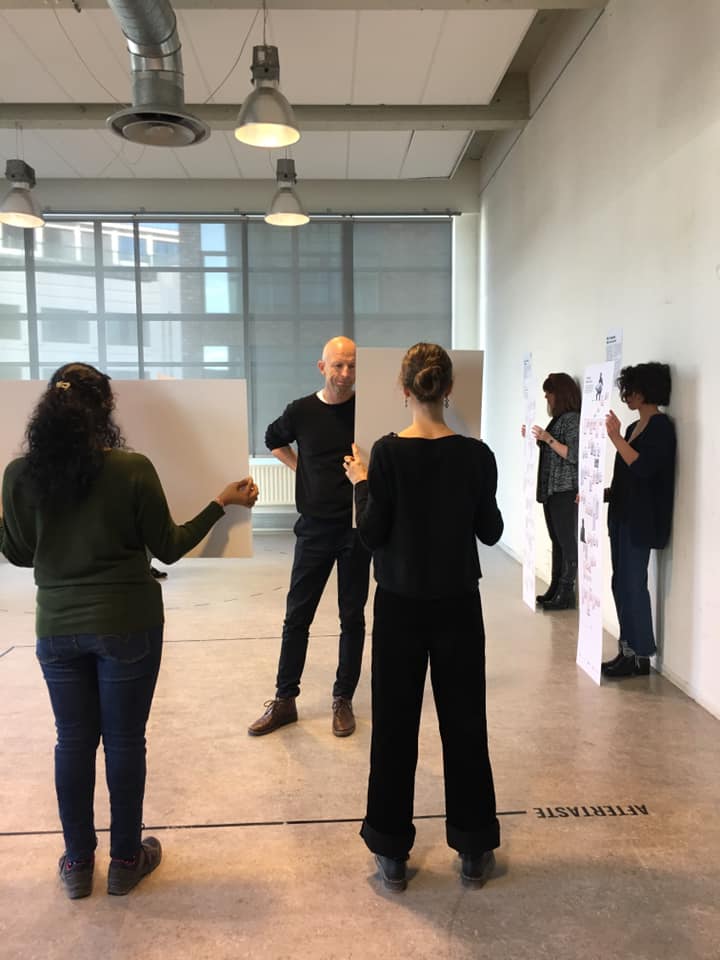
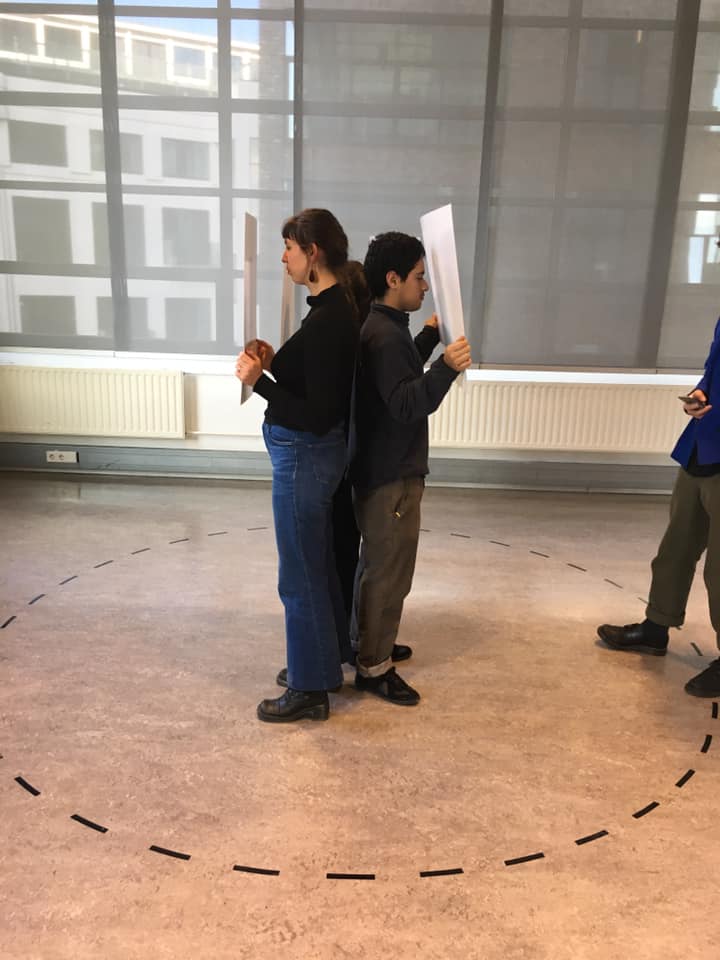

︎
Che cos’è la leggerezza?
Italy, 2019
During Milan Design Week 2019 I had the opportunity to curate the first edition of Officina delle Idee which included an exhibition of 9 projects accompanied by days full of workshops and live performances. Inspired by the first lesson of Italo Calvino’s Six Memos for the Next Millennium, the first edition of Officina delle Idee starts from the exploration of the concept of lightness in a dimension of sustainable culture and design, involving young creatives: artists, designers, performers, photographers and filmmakers. The reason that led us to reflect on lightness in these terms is the idea that designing invests our everyday life in all our actions and decisions. And it is probably the simplest and ‘lightest’ act we perform, as we are not even aware that we are doing it.
Officina delle Idee is Nuovapiattaforma’s first artistic and cultural project for young people with the aim of providing opportunities for creative minds to find free space and outlet.
Graphic design by Ortica Studio.
Featuring artists and designers: Edmondo Annoni, Lara Ilaria Braconi, Callicut, Giulia Damiani, Iwona Kosicka, Eleonora Luca, Francesca Minelli, Bianca Minotti, Francesca Mussi, Novarchitectos, Ortica Studio, Riccardo Roveda, Eleonora Salvato, Martina Spinelli.

0. Performance “metamateria” by Isotta Tomassini, Francesca Minelli and Eleonora Luca;
ph. Cecilia Casabona


1,2. Exhibition digital poster and exhibition catalogue;
Graphic design by Ortica Studio
2 DESIGN RESEARCH
How a plant comes to plant
The Netherlands, 2021
If we are to survive the planetary-scale exhaustion that seems to be the inevitable ends of the logic of the Anthropocene, humans need to find different ways of thinking in order to develop different ways of living. Cecilia Casabona uses participatory performance methodologies to research ways of escaping traditional logics of being human. How a plant come to plant is a film made in collaboration with a plant from Tanzania, given a Latin name by a German botanist, and now a mainstay in Dutch supermarkets. The film is a meditation on how contemporary humans have become illiterate to the agency of the natural world.
![]()
0. Photo shooting on the set of “How a plant comes to plant”; ph. Ivan D’Antuono
1. Film “How a plant comes to plant” exhibited
at The Graduation Show during Dutch Design Week 2021
This project has been exhibited during DDW 2021 for The Graduation Show together with:
IN CONVERSATION WITH/ Vittorio Bottini
The Netherlands, 2021
![]()
The projects has been together exhibited in the following installation:
![]()
![]()
Video installation, paper, prompts of clay and plastic, Eindhoven, 2021. ph. Silvia Angelucci
This work was exhibited:
SUPERMARKET – Stockholm Independent Art Fair 2023
‘Over and over and over’ we become, Tilburg, 2023
The Graduation Show, DDW 2021, Eindhoven
︎
Corona phobia - the mechanism of fear
The Netherlands, 2020
Corona phobia, a manual contains a series of small interventions - translated into absurd suggestions for action - in order to unmask the relationship between power and fear. The manipulation performed by many governments around the world are jeopardizing not only fundamental rights but also increasing the risk of discWriminatory attitudes and economic inequalities. We investigated the surveillance policies adopted by several countries around the world to prevent the spread of covid-19.The Netherlands, 2021
If we are to survive the planetary-scale exhaustion that seems to be the inevitable ends of the logic of the Anthropocene, humans need to find different ways of thinking in order to develop different ways of living. Cecilia Casabona uses participatory performance methodologies to research ways of escaping traditional logics of being human. How a plant come to plant is a film made in collaboration with a plant from Tanzania, given a Latin name by a German botanist, and now a mainstay in Dutch supermarkets. The film is a meditation on how contemporary humans have become illiterate to the agency of the natural world.
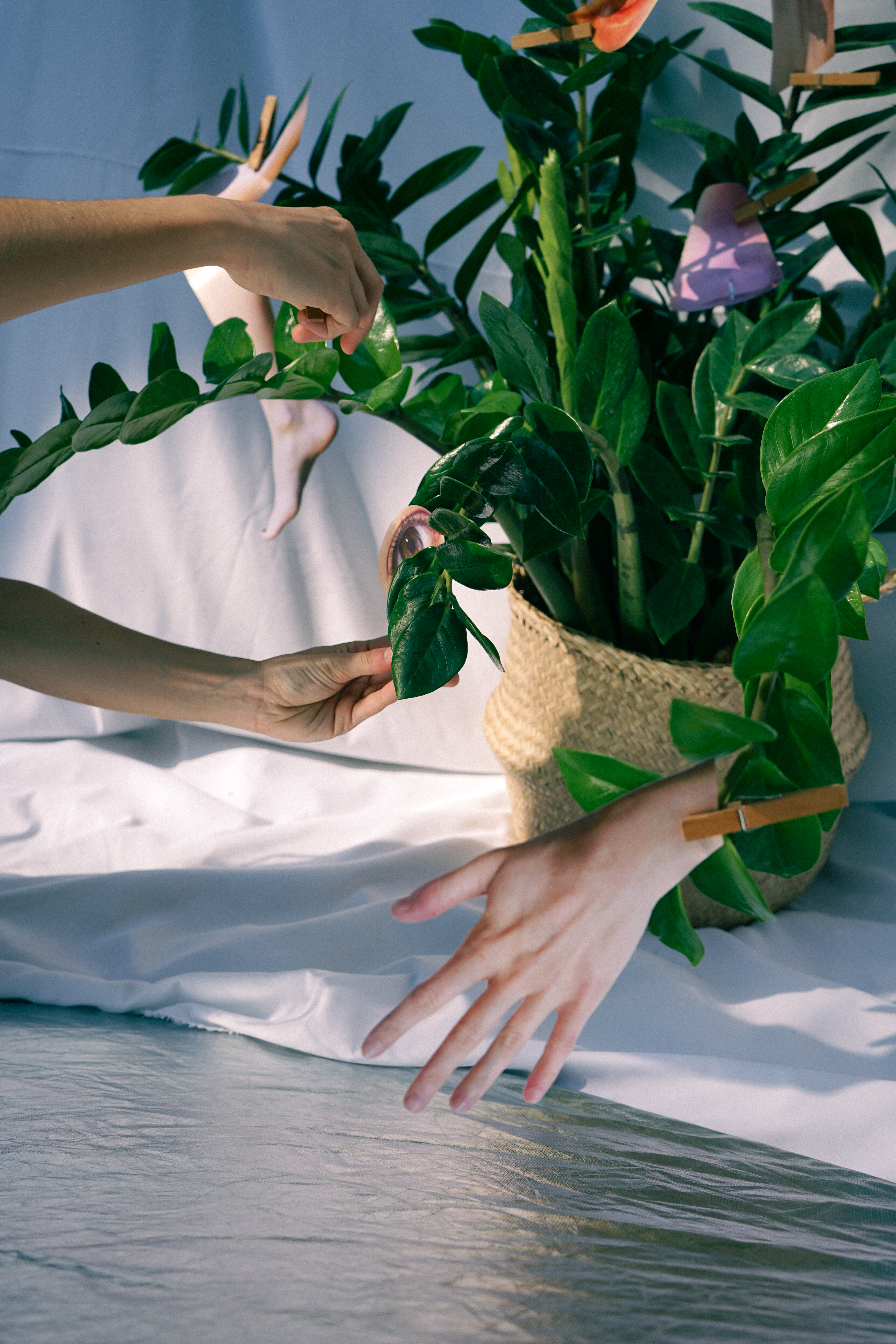
0. Photo shooting on the set of “How a plant comes to plant”; ph. Ivan D’Antuono
1. Film “How a plant comes to plant” exhibited
at The Graduation Show during Dutch Design Week 2021
This project has been exhibited during DDW 2021 for The Graduation Show together with:
IN CONVERSATION WITH/ Vittorio Bottini
The Netherlands, 2021

The projects has been together exhibited in the following installation:


Video installation, paper, prompts of clay and plastic, Eindhoven, 2021. ph. Silvia Angelucci
This work was exhibited:
SUPERMARKET – Stockholm Independent Art Fair 2023
‘Over and over and over’ we become, Tilburg, 2023
The Graduation Show, DDW 2021, Eindhoven
︎
Corona phobia - the mechanism of fear
The Netherlands, 2020
Co-designed with Guy Bar-Sinai, Hannah Hertrich and Laura Papke.
Have a look to this video for more info.
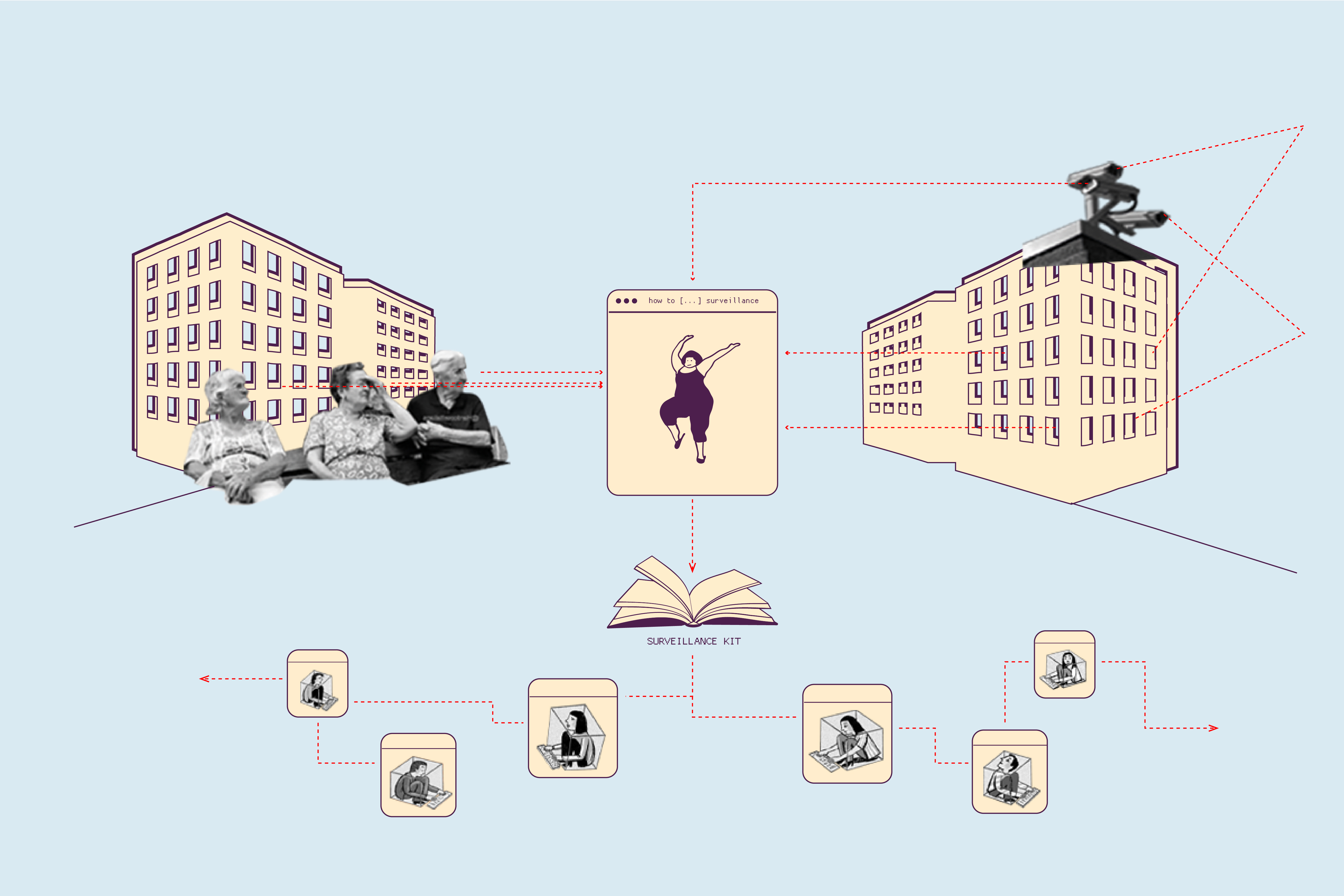
0. Surveillance KIT



︎
#howtoengagethepublicspace
The Netherlands, 2020
The Netherlands, 2020
Engagement:
“How to engage the public space?”
<< Dear Engagement,
You asked me a big question, to which I did not know the answer, and I still do not know. However, I dared myself to find it and to do so, I started an artistic research through the streets of Eindhoven.Firstly, I tried to understand what engagement is all about and how to produce it. To engage is “to enter in conversation with,” it is an active process that involves two or more parts.
How then, could I dare someone to engage with me within the public space? I first needed to be noticed, and then start to share something with my audience. The chosen location for my first attempt was a hidden alley, indifferent but powerful: the shame. I recognised shame as the tool through which to overcome the dichotomy between public and private space. To feel ashamed at home is unusual, so why then should we be ashamed outside? [...to be continued...] >>
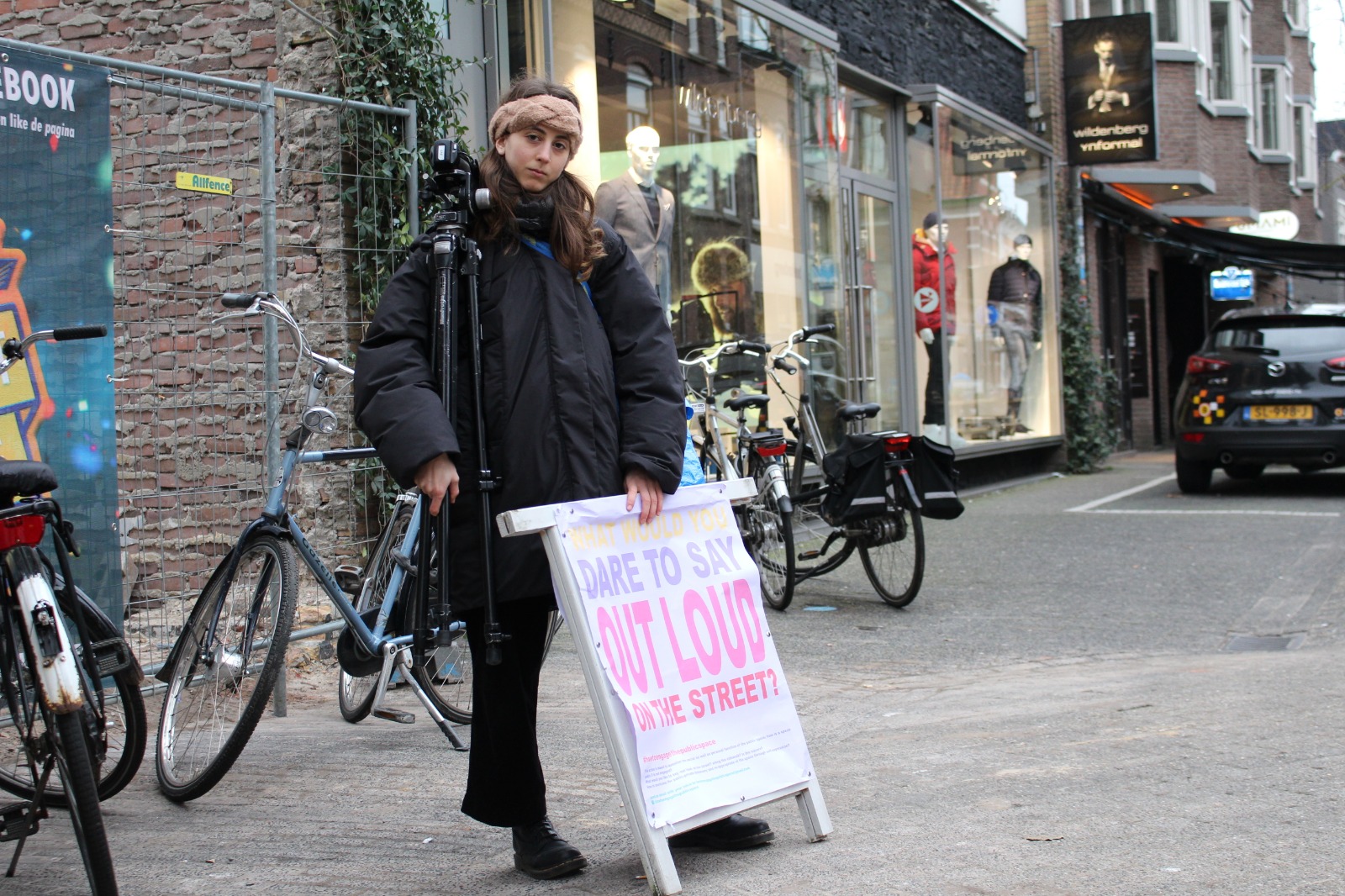
0. Cecilia Casabona, Eindhoven; ph. Valeria Fabiano

1. Info poster, size A2
︎
BYE BYE, DOGMA!
The Netherlands, 2019
An abstraction of a boat made out by an agreement which dissolves when in touch with water. We imprinted a dissolvable sheet with a contract stating the rules, limitations and dogmas of our design process. As designers we wanted to discuss our own rules and boundaries by destroying our creative dogmas. We didn’t sail the boat as it dissolved, such as agreements often do — as theory often does not correspond to practice.The Netherlands, 2019
Co-designed with Maren Bang and Fabio Salvadori. This project is the result of a one-week workshop promoted by Design Academy Eidnhoven.

0. Project in action, one-time performance; ph. Cecilia Casabona


1,2. Project in action; ph. Cecilia Casabona
3 WORKSHOPS
Listening Otherwise
The Netherlands, 2021
A performative writing workshop through which notions of productivity and value in the neoliberal west are questioned. Who or what is productive? Who can be said to produce value? And how to be productive otherwise? Through a series of performative exercises in which body, voice and rhythm become tools for research and experimentation, this workshop aims to set up a space for doing otherwise. A doing otherwise, together, that is not based on profit, accumulation or economic growth. The research finds its inspiration in music and the notion of polyphony which is conceived as a methodology for doing and being together, in contrast to the western idea of individualism (as idea of autonomy).
As a trained musician, polyphony came naturally to me by sharing my musical experience with others. I developed a practice that has parallels to music and language. By playing around the notions of performativity and performative utterances, expressing words becomes an act of doing-making. Informed by the reality-producing capacity of language (through defining what is meaningful within a field of possibilities, what it means to matter) this workshop enables polyphonic realities to emerge (Reworlding). A practice of doing otherwise is proposed, comprehending the design tools of writing and reading out loud inspired by music. The writing process has a propositional dimension of doing: how actions can be taken with words; the jointly reading out loud activates what I named “the intimate strike”: how actions can organize and give significance.
This project is a result of a thesis research “Reading out loud” written by Cecilia Casabona (The Critical Inquiry Lab, MA Eindhoven Design Academy).

0. Listening Otherwise, “the intimate strike”; ph. Femke Reijerman
︎
How to embody autonomy through listening
Online workshop, 2020
Online workshop, 2020
How to escape the policies of control and re-gain the autonomy of the art? The discussion around autonomy is contextualized within the contrast of quantitative democracy, where people is called every few years to vote anonymously, and qualitative democracy, where the commons - continuously and contingently re-shaped - opens up a democratic space for the singular and constantly recreate a space for singular but synchronized voices to pop up. In the same way artists are called to re-appropriate of their autonomy by dismantling relations of dependency and claim the authority of re-building their “own” commons - again and again and again and.
This project has been held online due to Coronavirus emergency.
Go to Listening Exercises here.


0,1. Listening exercises, video screenshots.
4 WRITINGS
Reading out loud. Polyphonic systems for a collaborative survival
The Netherlands, 2021
<< Precarity produces vulnerability through which life chaotically reproduces, while surviving means to ensemble various vulnerabilities in polyphony. Life itself is precarious: living is always collective, emergent and relational and therefore indeterminate. So, it is through indeterminacy and mutual vulnerability that we collectively survive — in polyphony.
The aim of this research is to encourage new forms of collaborative survival through the development of a practice of caring. Reading out loud is conceived as a tool for investigation and deconstruction of personal and common struggles. >> pp. 9-10
Graduation thesis, the Critical Inquiry Lab, Design Academy Eindhoven.
0. A freely interpreted graphic transcription of the first 4 bars of Invention for three voices
No. 4 in D minor BWV 790 by J. S. Bach. Designed by Cecilia Casabona
No. 4 in D minor BWV 790 by J. S. Bach. Designed by Cecilia Casabona



1,2,3. Master thesis publication. Written by Cecilia Casabona. Concept and book design by the author.
To read the full thesis go here.
